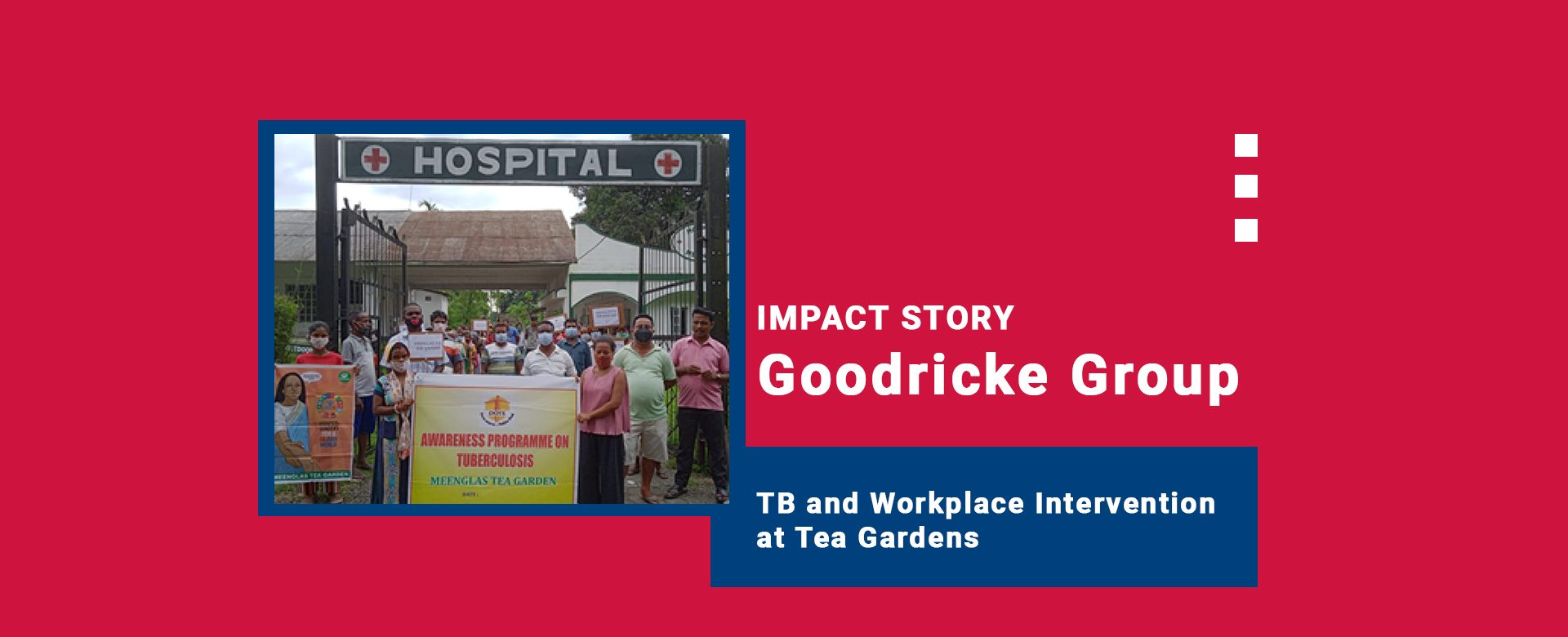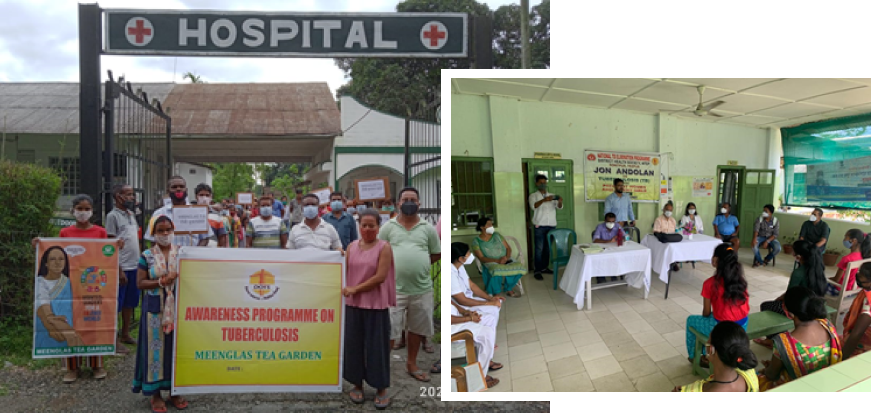
Tea Estates Efforts to End TB
Goodricke Group Ltd – part of Camellia Plc, an international group of diverse companies, has tea estates and factories located across Assam and West Bengal including in the Darjeeling hills. About 180,000 workers and their families live within the tea estates in housing provided by the company.
The health of this large population is looked after by a strong and dedicated team of doctors and trained para medical staff who run 33 hospitals and 3 dispensaries. However, Tuberculosis remains a major health problem amongst tea garden workers. Factors such as illiteracy, alcohol and tobacco consumption, living conditions and unbalanced dietary practices of the community, and delay in seeking TB treatment make them a high-risk group.
Intervention
Responding to the launch of the Revised National TB Program in early 2000s, Goodricke Group adopted TB interventions across all ongoing health services since early 2000s. Goodricke’s program has grown into a large scale well-designed holistic model that includes training of staff, awareness generation activities amongst the high-risk groups, active case finding, contact screening, early diagnosis, free treatment supported with counselling and follow-ups with close linkages with the National TB Program. Non-workers residing in the gardens are also included in their TB elimination program.
- Training of Medical officers’ and all health workers
- Community based activities on TB
- Health camps with free medicines and lab investigations
- World TB Day Celebrations
- TB Clinics at weekly intervals in the garden hospital
- Collaborative TB/HIV activities; addressing TB comorbidities
- Identification and sensitization of TB Champions amongst community members
- Timely Drug Sensitivity Test
- Support and counselling in disease management, especially MDR-TB
-
Liason with government machinery, leveraging diagnostic facilities
-
Close coordination with the District TB centre*
-
Free Diagnostic services via two company owned Designated Microscopy Centre (DMC) and two X-ray units
-
Patient registration on Nikshay portal
-
Free Treatment services
-
Systematic screening of contacts and health care workers
-
Periodic reviews with health workers to address inadequacies and ensure continuous improvement
-
Nutrition support**
-
WASH (Water, Aeration, Sanitation & Hygiene) program being implemented and upscaled in residential colonies

As a diamond member, they were provided technical and programmatic support by the CTP secretariat to further build up Goodricke Groups TB interventions. As a result, strategic collaborations with the NTEP led to all Medical officers of Assam being trained on TB care; World TB Day was celebrated with rallies by school children; trainings were also organized for TB survivors to become TB champions who are effective peer educators and offer emotional support to people with TB; workers of the tea gardens undertook a pledge to eliminate TB. With the help of the training, draft policies, IEC material shared by the CTP team TB Free workplace campaign has also been launched.
21-years-old Priyanka Lohora had no exposure to TB patients in her family. However, when she showed symptoms of cough for 2 weeks, occasional low grade fever, weakness and loss of weight, the health worker promptly arranged a sputum and CB-NAAT test at the nearest microscopy center. Diagnosed with MDR TB she was admitted at Jalpaiguri TB hospital for 14 days. On her return home, for the remaining 9 months of treatment, the Goodricke health worker supported her with nutritional supplements, managing adverse drug reactions and encouraging her to complete treatment. All her family contacts and neighbours were also screened for TB. This resulted in her timely treatment, prevention of secondary cases and complete cure.
Impact
With an average of 400+ TB cases being diagnosed annually, the intervention has identified 1749 TB cases between 2016-2019 across the tea estate.
Awareness generation, advocacy, communication and community engagement has increased demand for early diagnosis and treatment, combat stigma and discrimination and empowered people affected by TB. Inclusion of workers families in the program, has closed the gaps in reaching those missed earlier. The free treatment and admission of all TB Patients during the initial phase has led to reduction in the treatment drop-out cases. Counselling and nutrition support has increased treatment adherence significantly. Linkages with District TB Cell and district diagnostic facilities in 8 districts in Assam & 3 districts in West Bengal has improved access and delivery of TB diagnostic and treatment services.
Key Lessons
The multi-pronged strategies coupled with commitment to combat the public health menace of TB amongst its high-risk tea workers has made the model successful. The intervention encompasses community engagement to increase knowledge base and encourage health seeking behaviour; early detection and diagnosis; active case finding and contact screening; free treatment supported with nutrition supplementation and counselling. It leverages existing health infrastructure of the government program as well as that of Goodricke – making the model resource efficient. The addition of investing in X-Ray units and setting up Designated Microscopic Centers contributed significantly to early detection, while identifying and nurturing TB champions from the community itself ensured continuous messaging and treatment adherence amongst patients.